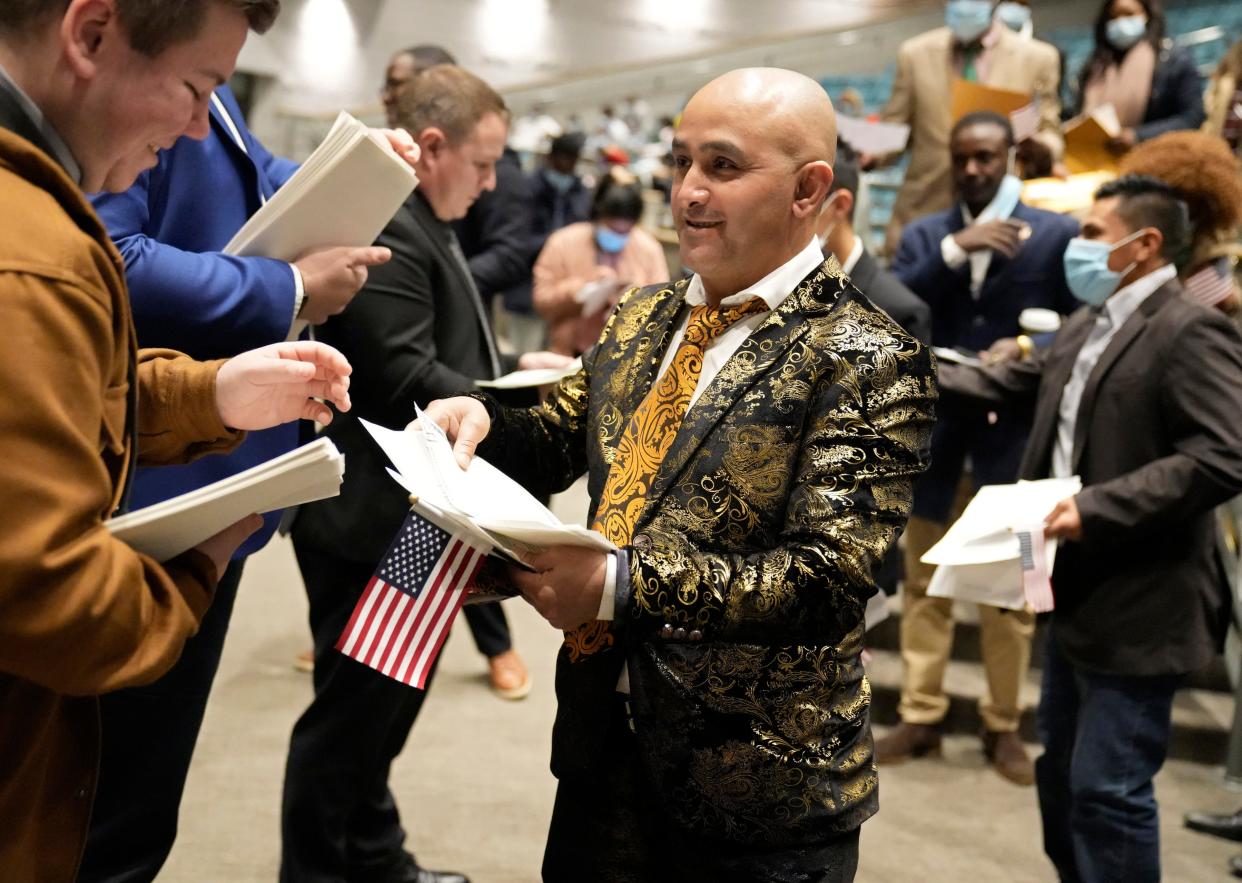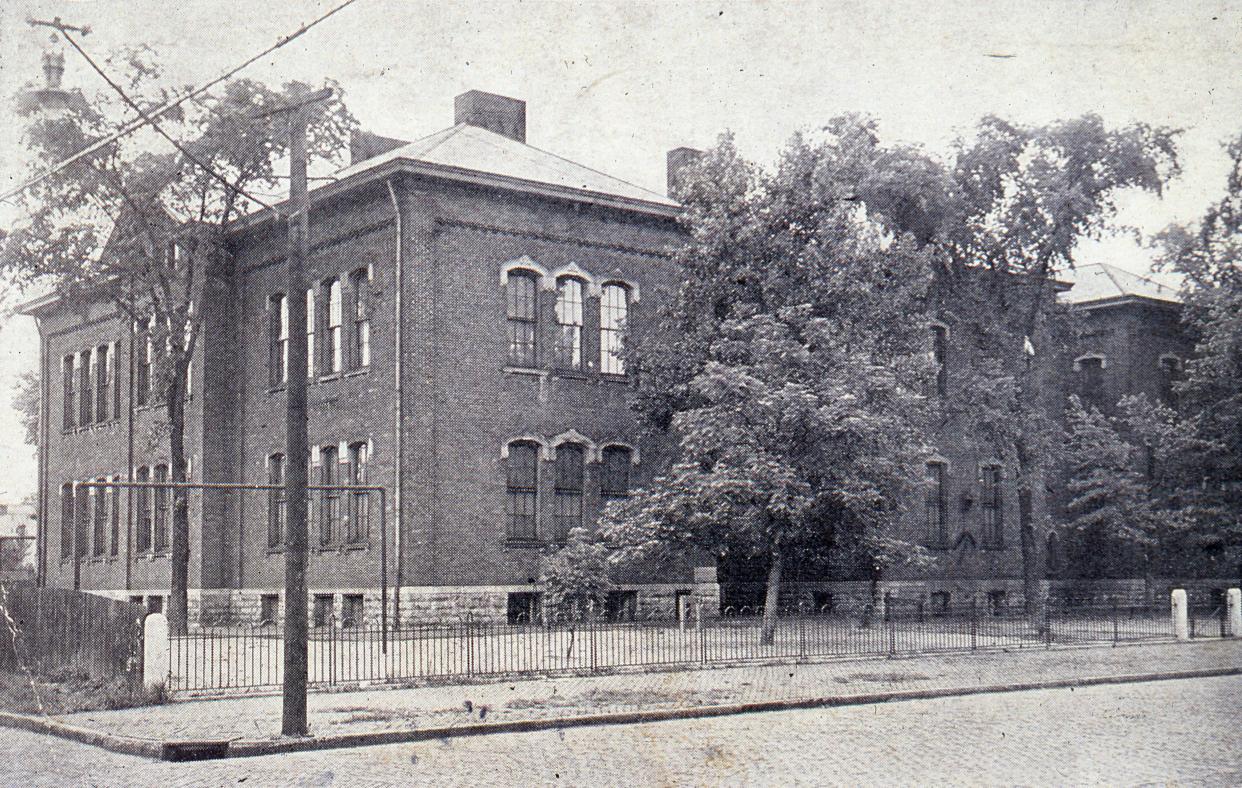Ohio's current immigrant population much more diverse, still well below national level

The proportion of immigrants in the United States is at its highest level in over a century, but that's not the case in Ohio.
Around 15% of the national population is comprised of immigrants, compared to around 5% in Ohio, according to the U.S. Census Bureau's American Community Survey. The proportion of Ohio's population that is foreign-born today is far lower than in 1870, when around 14% of Ohioans were immigrants, census data shows.
However, Ohio's immigrant communities today are far more diverse — representing a larger swath of the globe — than at any previous point in history since the federal government began collecting birthplace data in 1850, the data shows.
As immigration once again shapes up to be a major election issue in 2024, Ohio historians told The Dispatch that current political debates around immigration mirror those from the past.
“I worry as a historian because the rhetoric around (immigration) is often so divisive, and it lacks the larger historical awareness of how we've had these conversations before — and the country hasn't fallen apart," said Kevin Adams, history department chair at Kent State University.
Ohio's immigration history
Some of Ohio's early "immigrants" were members of Native American tribes who were displaced into the area from the east by warfare and European diseases, according to Becky Odom, a curator at The Ohio History Connection. These included tribes like the Lenape (Delaware), who were later uprooted again as white settlers moved into Ohio.
Following Ohio's statehood in 1803, immigrants from Germany, Great Britain and Ireland made up the bulk of foreign-born Ohioans, according to Ben Baughman, another curator for the Ohio History Connection. Germans and Irish people played important roles in the construction of Ohio's extensive canals, which served as thoroughfares for commerce long before the coming of interstate highways.

By 1860, nearly half of all immigrants living in Ohio were German, with the rest mostly coming from elsewhere in northwestern Europe, according to census data.
But in the late 19th century, immigration to the U.S. underwent a dramatic shift, with more southern and eastern Europeans arriving.
"The new immigration was really important in places like Cleveland, especially as various European ethnic groups showed up ... (building) communities rooted around ... factories ... their own churches, their own parishes — we get increasing numbers of Jews and Eastern Orthodox Christians," said Adams.
By 1910, nearly 15% of Americans and almost 13% of Ohioans were foreign-born, a figure that does not include children of immigrants born locally.
But the U.S. began to restrict immigration in the 1910s, culminating in country-specific quotas that were set in 1924, according to Adams. The quotas, which were influenced by eugenics and "scientific racism," severely restricted immigration from much of the world besides northwestern Europe and — unintentionally — overland immigration from Latin America, he said.
The quota system was finally dismantled by the Immigration and Nationality Act of 1965, which allowed a much broader range of people to immigrate.
Since 1970, the U.S. has experienced a dramatic rebound in immigration, but the rebound has been slower and smaller in Ohio, according to census data. The proportion of immigrants in the state grew from 2.4% in 1990 to 4.9% in 2022, according to the census' American Community Survey.
Nationally, around half of foreign-born U.S. residents today come from Latin America, followed by Asia (around 31%), Europe (approximately 11%) and Africa (around 5%).
Most of Ohio's foreign-born residents come from Asia, with India the top country of origin. African and Latin American immigrants together make up over one-third of Ohio's immigrants.
Persecution, opportunity and anti-immigrant sentiment
The factors that draw immigrants to Ohio — such as economic opportunity, freedom from persecution and war abroad — have remained fairly constant over the centuries, according to Odom, the Ohio History Connection curator.
"For us as students of history, history is very cyclical. … There are always going to be people in the world who see this state and this country as a place of opportunity," she said.
Baughman, her colleague, said that anti-immigration sentiment is as old as immigration itself.
Baughman pointed to examples of anti-German riots led by the "Know-Nothing Party" in Cincinnati in 1855, followed by rising anti-Irish and anti-Chinese sentiment in the late 1800s.
Amidst the Great Migration following World War I, Black migrants from the American South to northern states like Ohio encountered opposition similar to immigrants from abroad, said Odom.
Adams said that labor groups were historically more critical of immigration than they are today, because they sometimes saw immigrants as competitors with American workers.
"In the early 1970s … folks on the left — union folks and African American civil rights groups — were interested in discussing immigration restriction, whereas those on the right, who were interested in capitalist market development and anti-union politics, were in favor of immigration," he said.
Brian Hayashi, who is a professor of American history at Kent State, said he sees common intellectual roots between current opposition to immigration and the anti-immigrant fervor of the early 20th century.
"There is a desire to understand the United States as a nation of northern and western European people and values ... But the problem is the United States isn't that country anymore, and arguably, it hasn't been since about 1880," Hayashi said.
Peter Gill covers immigration, New American communities and religion for the Dispatch in partnership with Report for America. You can support work like his with a tax-deductible donation to Report for America at:bit.ly/3fNsGaZ.
pgill@dispatch.com
This article originally appeared on The Columbus Dispatch: Ohio's 'immigration surge' was in the 1800s: a look at historical data
